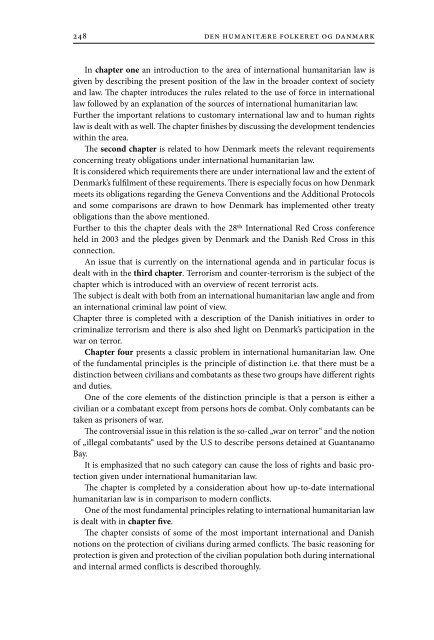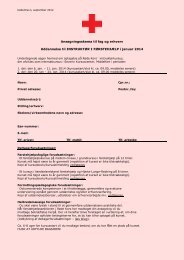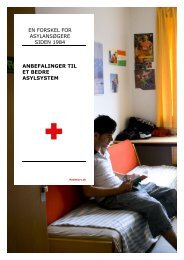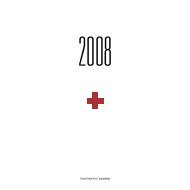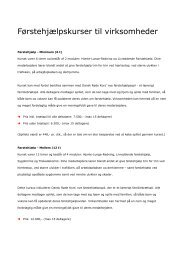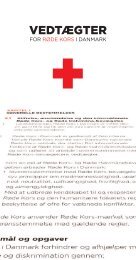den humanitære folkeret og danmark - Røde Kors
den humanitære folkeret og danmark - Røde Kors
den humanitære folkeret og danmark - Røde Kors
You also want an ePaper? Increase the reach of your titles
YUMPU automatically turns print PDFs into web optimized ePapers that Google loves.
24 DEN HUMANITÆRE FOLKERET OG DANMARK<br />
In chapter one an introduction to the area of international humanitarian law is<br />
given by describing the present position of the law in the broader context of society<br />
and law. The chapter introduces the rules related to the use of force in international<br />
law followed by an explanation of the sources of international humanitarian law.<br />
Further the important relations to customary international law and to human rights<br />
law is dealt with as well. The chapter finishes by discussing the development ten<strong>den</strong>cies<br />
within the area.<br />
The second chapter is related to how Denmark meets the relevant requirements<br />
concerning treaty obligations under international humanitarian law.<br />
It is considered which requirements there are under international law and the extent of<br />
Denmark’s fulfilment of these requirements. There is especially focus on how Denmark<br />
meets its obligations regarding the Geneva Conventions and the Additional Protocols<br />
and some comparisons are drawn to how Denmark has implemented other treaty<br />
obligations than the above mentioned.<br />
Further to this the chapter deals with the 28th International Red Cross conference<br />
held in 2003 and the pledges given by Denmark and the Danish Red Cross in this<br />
connection.<br />
An issue that is currently on the international agenda and in particular focus is<br />
dealt with in the third chapter. Terrorism and counter-terrorism is the subject of the<br />
chapter which is introduced with an overview of recent terrorist acts.<br />
The subject is dealt with both from an international humanitarian law angle and from<br />
an international criminal law point of view.<br />
Chapter three is completed with a description of the Danish initiatives in order to<br />
criminalize terrorism and there is also shed light on Denmark’s participation in the<br />
war on terror.<br />
Chapter four presents a classic problem in international humanitarian law. One<br />
of the fundamental principles is the principle of distinction i.e. that there must be a<br />
distinction between civilians and combatants as these two groups have different rights<br />
and duties.<br />
One of the core elements of the distinction principle is that a person is either a<br />
civilian or a combatant except from persons hors de combat. Only combatants can be<br />
taken as prisoners of war.<br />
The controversial issue in this relation is the so-called „war on terror“ and the notion<br />
of „illegal combatants“ used by the U.S to describe persons detained at Guantanamo<br />
Bay.<br />
It is emphasized that no such category can cause the loss of rights and basic protection<br />
given under international humanitarian law.<br />
The chapter is completed by a consideration about how up-to-date international<br />
humanitarian law is in comparison to modern conflicts.<br />
One of the most fundamental principles relating to international humanitarian law<br />
is dealt with in chapter five.<br />
The chapter consists of some of the most important international and Danish<br />
notions on the protection of civilians during armed conflicts. The basic reasoning for<br />
protection is given and protection of the civilian population both during international<br />
and internal armed conflicts is described thoroughly.


